Ryan Hall's Blog, page 372
August 3, 2015
Photos: 2015 Special Olympics World Games
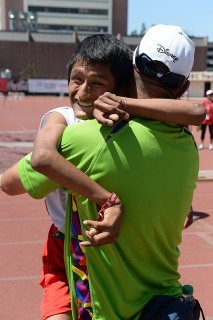
Every two years, Special Olympics athletes come together to compete at the Special Olympics World Games. This year, more than 6,500 athletes from 165 countries descended on Los Angeles to compete in 25 different sports at venues throughout Los Angeles, including the July 25-Aug. 2 track and field competition. The inspiring photos in this gallery are a testament to the notion that the freedom, courage, determination and joy of sport are truly without boundaries.
Photo Gallery
1 of {count}
Back to Start
View Larger Image
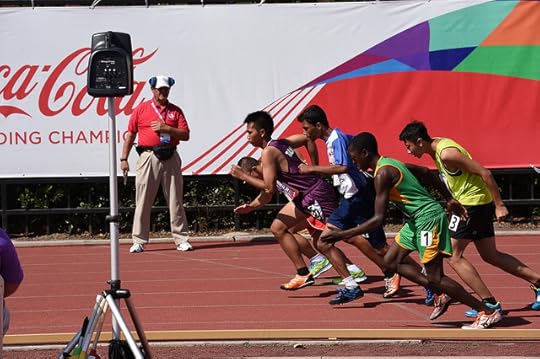
2015 Special Olympics World Games
Photo: Ken Smith
View Larger Image
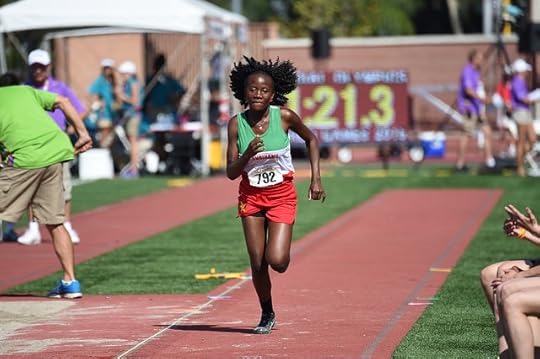
2015 Special Olympics World Games
Photo: Ken Smith
View Larger Image
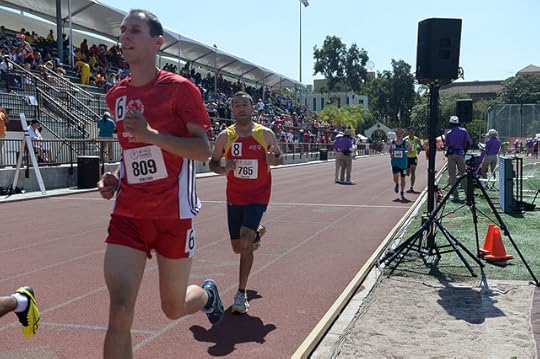
2015 Special Olympics World Games
Photo: Ken Smith
View Larger Image

2015 Special Olympics World Games
Photo: Ken Smith
View Larger Image

2015 Special Olympics World Games
View Larger Image
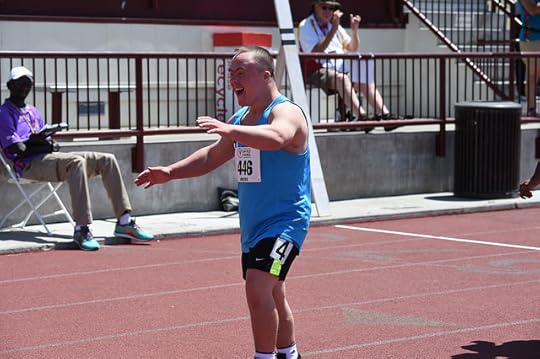
2015 Special Olympics World Games
Photo: Ken Smith
View Larger Image
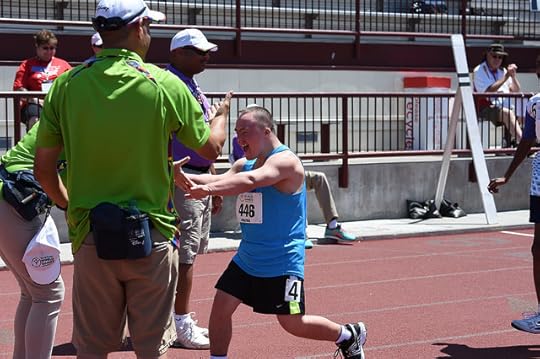
2015 Special Olympics World Games
Photo: Ken Smith
View Larger Image
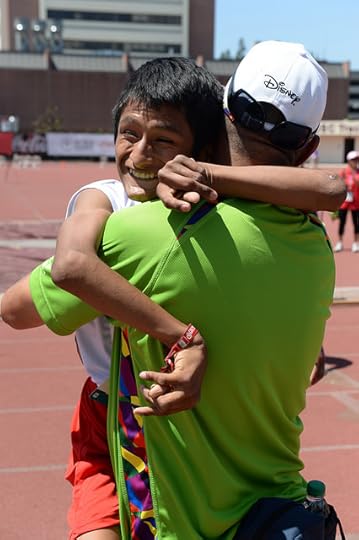
2015 Special Olympics World Games
Photo: Ken Smith
View Larger Image
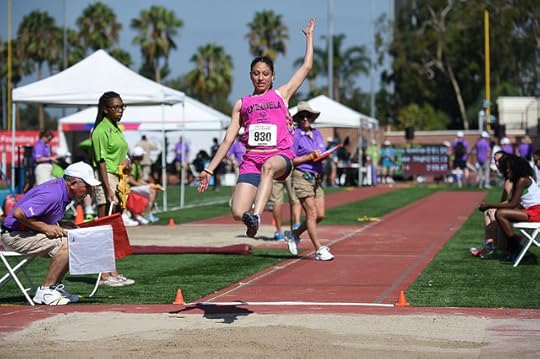
2015 Special Olympics World Games
Photo: Ken Smith
View Larger Image

2015 Special Olympics World Games
Photo: Ken Smith
View Larger Image
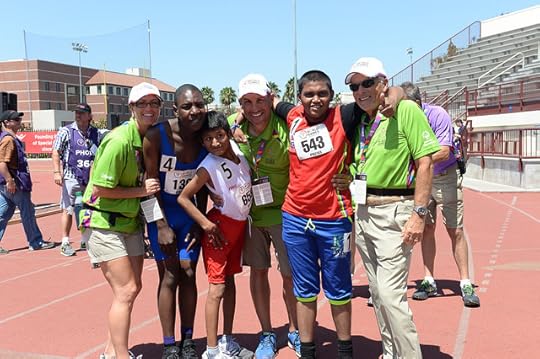
2015 Special Olympics World Games
Photo: Ken Smith
View Larger Image

2015 Special Olympics World Games
View Larger Image

2015 Special Olympics World Games
Photo: Brian Hodes
View Larger Image
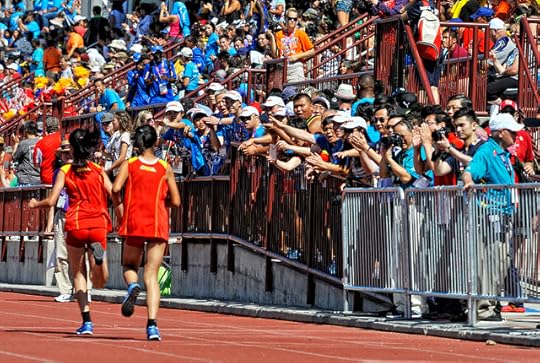
2015 Special Olympics World Games
Photo: Brian Hodes
View Larger Image
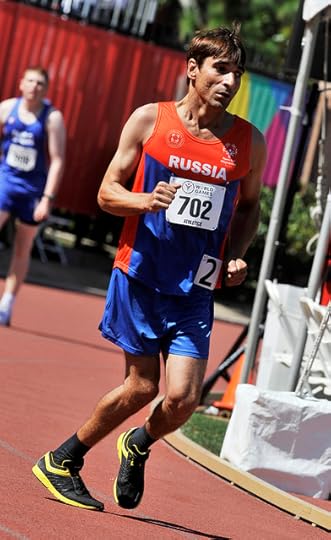
2015 Special Olympics World Games
Photo: Brian Hodes
View Larger Image
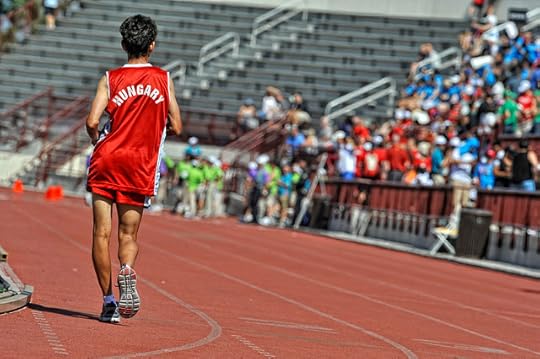
2015 Special Olympics World Games
View Larger Image
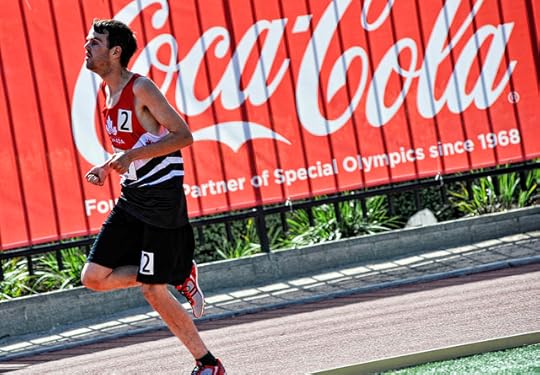
2015 Special Olympics World Games
Photo: Brian Hodes
View Larger Image

2015 Special Olympics World Games
View Larger Image
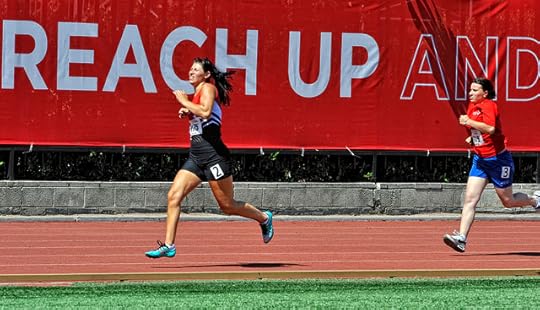
2015 Special Olympics World Games
View Larger Image
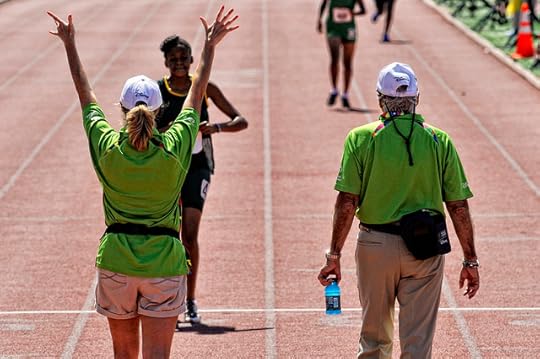
2015 Special Olympics World Games
Photo: Brian Hodes
View Larger Image
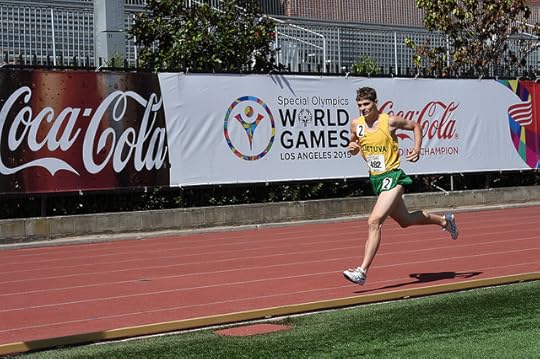
2015 Special Olympics World Games
View Larger Image

2015 Special Olympics World Games
Photo: Brian Hodes
View Larger Image
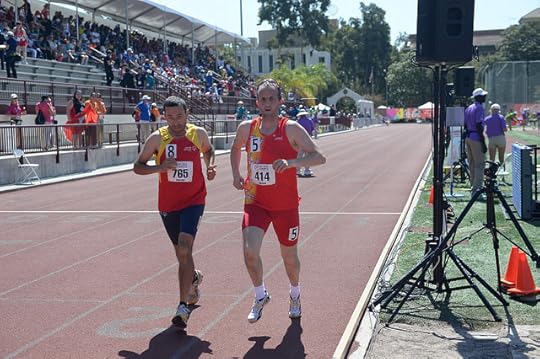
2015 Special Olympics World Games
Photo: Brian Hodes
View Larger Image
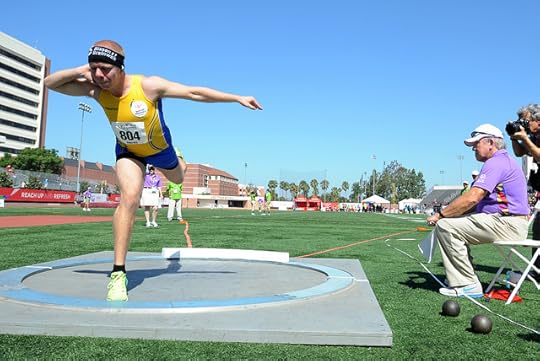
2015 Special Olympics World Games
Photo: Brian Hodes
View Larger Image
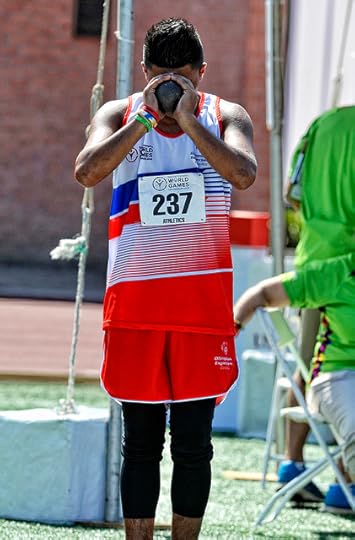
2015 Special Olympics World Games
Photo: Brian Hodes
View Larger Image
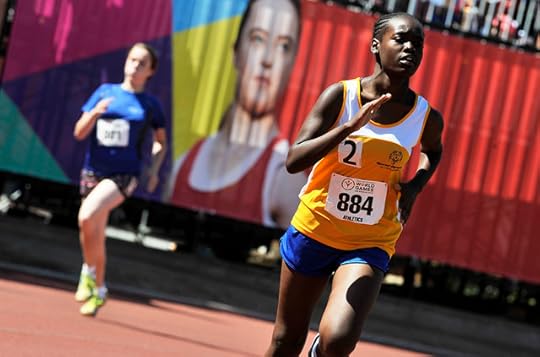
2015 Special Olympics World Games
Photo: Brian Hodes

More Galleries
The post Photos: 2015 Special Olympics World Games appeared first on Competitor.com.
Eminem: Running Was My Recovery

Photo: Featureflash/Shutterstock.com
Men’s Journal published an interesting piece on Eminem, the controversial rapper and actor who recently recovered from an addiction to alcohol and prescription drugs.
In the article, Eminem (real name Marshall Mathers) shares how he took to the treadmill, which he found was a perfect way to lose weight (he maintained a poor diet and overate due to stomach pain caused by prescription pill abuse), increase endorphins and help him sleep. He lost close to 80 pounds in the process.
“It’s easy to understand how people replace addiction with exercise. One addiction for another but one that’s good for them. I got an addict’s brain, and when it came to running, I think I got a little carried away,” Eminem writes.
Eminem states in the article that he ran 17 miles a day on the treadmill—2 separate sessions of one hour each that consisted of about 8.5 miles per session. He admits it was too much, “All the constant pounding from the running began to tear up my hip flexors.” He eventually transitioned to a more moderate routine that entails both cardio and strength training.
Eminem has been one of the most successful names in rap music over the last 15 years, winning 15 Grammy awards and selling more than 40 million albums.
READ MORE: Men’s Journal
The post Eminem: Running Was My Recovery appeared first on Competitor.com.
The Perfect Warmup For Speed Workouts
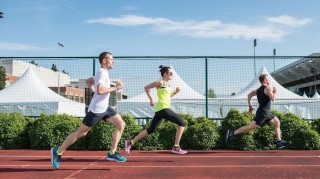
Strides, or short accelerations, are an integral part of a well-rounded warmup routine. Photo: John Jefferson
Head to your local track after work on a weeknight and the scene is likely to resemble a three-ring circus. You’ll see runners jogging counter-clockwise in the outside lanes, some skipping, kicking and high-kneeing their way across the infield and others sprinting back and forth on the home straightaway.
Like a team of acrobats getting ready to practice their performance routine, these athletes are in various stages of warming up for the speed workouts that will help them dial in their race-day fitness.
But why are they doing all these different things prior to running laps around the track? And is it necessary?
We caught up with 2:23 marathoner Blue Benadum, founder of the L.A. Speed Project and a coach with the Nike+ Run Club in Los Angeles, to address the whys and hows of warming up properly so you can get the most out of your next speed workout or race.
Why is it important to warm up for speed workouts?
Speed equals high intensity. Coming from a calm, rested state into high intensity too quickly is often the biggest cause of injury in athletes. Humans are actually one of the few animals that have the ability to go faster at the end of a bout of running. This makes us great endurance athletes but also requires that we ease the body into motion. Warming up increases your range of motion and generates heat, which is necessary for muscle, ligament and tendon elasticity. These are crucial factors in the explosive nature of fast running. Another benefit to warming up is that it raises the heart rate gradually to promote energetic efficiency. A sudden spike in heart rate causes a higher rate of glycogen to be exhausted, as the aerobic system and fat burning capabilities are effectively shut off.
What are the key elements of a good warm-up routine?
A good warmup routine should be full body, dynamic in all your movements and build from simple to complex. Here are the four key parts:
1. A light jog. This is a great start as it engages the entire body but is very easy and limited in its range of motion. The heart rate increases slightly and blood flows to all the right places.
2. Dynamic Stretching. This is different from conventional, static stretching. In dynamic stretching, the stretch is only held for a second or two and then released and repeated a handful of times. This prepares the body for motion without robbing the tissues of some of the necessary tightness needed for elastic recoil, or energy return—basically the tissues’ ability to store and return energy like a spring. The goal should be to do enough dynamic stretches to target the major muscle groups that will working during exercise, such as the glutes, hamstrings, calves, quads, core, chest and back.
3. Activations and drills. Activations use the muscles in a more explosive manner. The goal is to take the body through specific ranges of motion, often exaggerated to hyper-prepare the mind and body for the upcoming effort. Activations typically isolate specific parts of the body to ensure that a particular muscle is ready to do its job. An example would be a straight leg kick back, where the athlete leans slightly forward, hands on the waist for balance, slightly bending one knee for stability while pointing the other leg straight back, then lowering and lifting the leg. This activation specifically warms up the glute muscle. After activations, the body is ready for drills. This is everything from running in place, high knees, butt kicks, A-Skips, B -Skips, carioca, high-knee skips and a sideways shuffle. Drills get the entire body working together to create explosive, exaggerated movements.
RELATED: Essential Drills For Speed and Efficiency
4. Strides. The last step is to run a few short build-up strides, an interval of anywhere between 50-100 meters where running speed is steadily increased to just below max effort by the end—unlike a full sprint, where the speed is max effort all the way through.
RELATED: What are strides?
How long should your warmup routine take?
The rule of thumb is: The shorter the race, the longer the warmup. The reason is that intensity and speed should be higher the shorter the distance you racing. In a marathon, because the intensity is lower than a shorter distance race effort, some of the warming up will be done during the race itself. And because the duration of the race is so long, it is best to save as much vital energy as possible for the race itself. In a 5K, the opposite is true. There isn’t enough time to warmup during the race! If you warmed up during the race, the race would be finishing just as the body was reaching its comfort zone. While it will vary from one athlete to another, when racing a mile up to a 5K, try warming up for about 45 minutes. For a 10K, 20-30 minutes and about 10 minutes for a marathon. The minimum for any speed workout is 10 minutes, but preferably 20-30 minutes when looking to really push in a hard workout.
Can (or should) you do the same warmup routine before races?
The biggest difference between your race warmup and your workout warmup is the that the race distance really dictates the duration of warmup. In workouts, the duration is less important relative to workout time, but all the ingredients—jogging, dynamic stretches, drills/activations and strides—remain the same for workouts and racing.
RELATED: Dynamic Warmups Make You Stronger, Faster
The post The Perfect Warmup For Speed Workouts appeared first on Competitor.com.
August 2, 2015
Shoe Talk: Zoot Diego
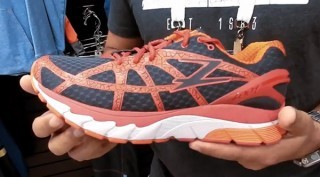
Let’s take a look at one of Zoot’s newest cushioned trainers—the Diego.
RELATED: Shoe Talk: Zoot Del Mar
The post Shoe Talk: Zoot Diego appeared first on Competitor.com.
Ireland Natives Win Rock ‘n’ Roll Dublin
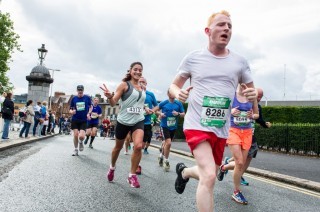
Photo: Ryan Bethke
Two hours before the start of the third annual Dublin Rock ‘n’ Roll Half Marathon, rain pelted the city. But the luck of the Irish was with thousands of runners who took to the streets. By the start of the race the rain stopped, the runners started and the race rocked on.
No one enjoyed the morning more than Paul Pollock and Lizzie Lee. Pollock pulled away from Mick Clohisey in the final half mile to win the men’s race in 1 hour, 5 minutes, 7 seconds. Clohisey finished second in 1:05:18.
As for the women’s race, it wasn’t much of one. Lee dominated, winning in 1:13:25. Sarah Mulligan took second in 1:17:33. Lee, who hails from Cork, won in 2013, then skipped last year’s race after giving birth to her daughter, Lucy, in June.
RELATED: Photos: 2015 Rock ‘n’ Roll Dublin
Mulligan won the 13.1-miler to Phoenix Park in 2014.
This time, Lee regained her title, and, at 35, set a personal record. Her previous PR was 1:14:05. Motherhood obviously agrees with her.
“It’s superb,” Lee said. “I can’t wait to get in the car and give her a cuddle this evening.”
By about Mile 8, Pollock and Clohisey had pulled away and it was a two-man game, Clohisey in the lead, Pollock drafting off his shoulder.
“No one was willing to take the lead,” said Clohisey. “I thought someone might take over.”
Bothered the past three days by a cold, Pollock wanted to exert the least amount of energy possible.
RELATED: Rock ‘n’ Roll Dublin Results
“My coach said, ‘Sit in as long as you can,’ ” explained Pollock, who lives outside Belfast. “I sat until about a half mile to go and thought, ‘That’s long enough’ ”
The race served as Ireland’s half marathon national championships. While Clohisey wasn’t keen on Pollock drafting off him for miles, he didn’t complain.
“A race is a race,” said Clohisey, who lives in Dublin and was cheered throughout the course. “It’s a championship race. I didn’t have to take the lead. I could have sat back as well.”
The event attracted runners from 48 countries. Nearly 1,100 Americans hopped the pond. Some 1,500 runners represented the United Kingdom.
The race began at The Point Village, hard by the Irish Sea. The first three miles hugged the Liffey River. At the Saint James Guinness Brewery, the route veered away from the river and past landmarks such as the Museum of Modern Art.
The last five miles winds around Phoenix Park. At 1,760 acres, it’s the largest park in Europe, a constant sea of green grass, green trees and open fields.
Said Melissa Beach, who came from Atlanta for the race, “This is a place where you’d just like to come and have a picnic.”
As with any Rock ‘n’ Roll Series event, runners hit the road in costumes. There were leprechauns, runners in tutus and wigs, some playing the role of wanna-be rock star, carrying inflatable guitars.
“I loved hearing the bands,” said 25-year-old Chelsea Roussopulos from outside Denver.
“I like that they played songs we know,” said her friend, Rebekka Gyger.
“Like ‘Deep Home Alabama’ and ‘Wild Thing,’” added Roussopulos.
Hanging in Dublin gave Gyger a bit of a history lesson.
Said Gyger, “I love that you can just be walking down the street, see an old cathedral or see some building that’s been here since, I don’t know, the Vikings.”
The post Ireland Natives Win Rock ‘n’ Roll Dublin appeared first on Competitor.com.
Photos: Thousands Take Part in Rock ‘n’ Roll Dublin Half Marathon
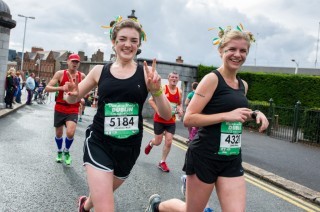
Photo Gallery
1 of {count}
Back to Start
View Larger Image

Credit: Ryan Bethke
View Larger Image
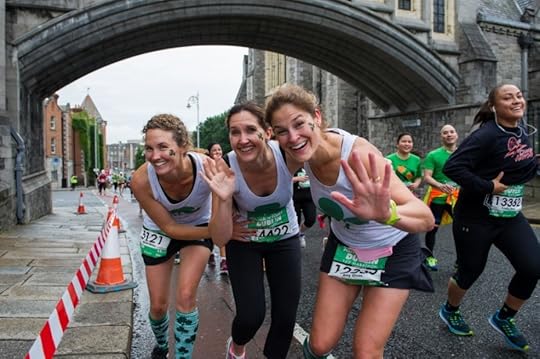
Credit: Ryan Bethke
View Larger Image

Credit: Ryan Bethke
View Larger Image
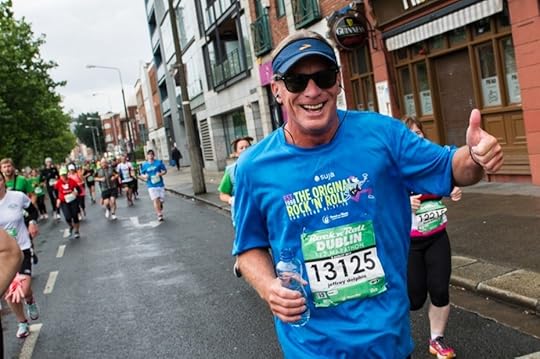
Credit: Ryan Bethke
View Larger Image
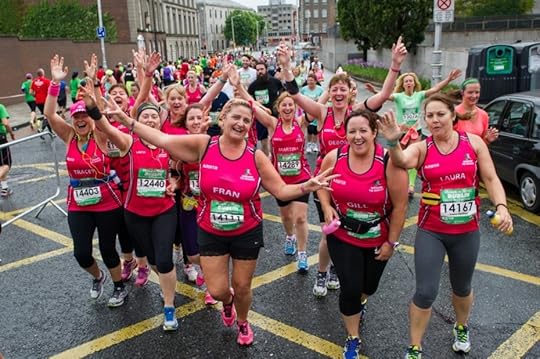
Credit: Ryan Bethke
View Larger Image
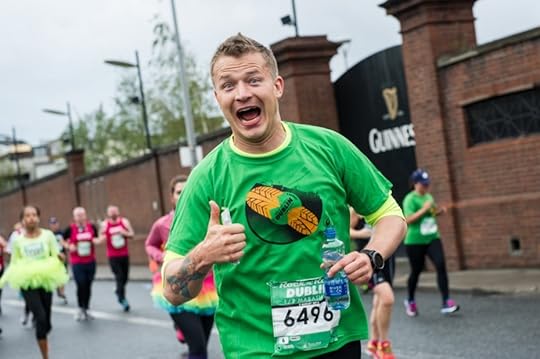
Credit: Ryan Bethke
View Larger Image
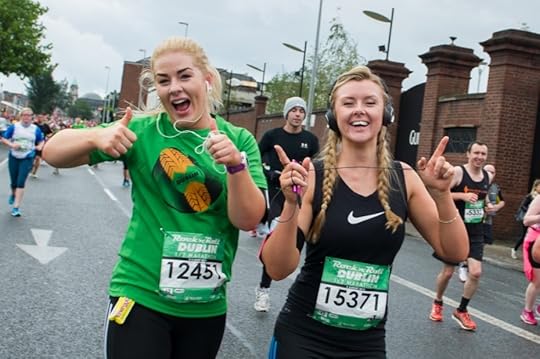
Credit: Ryan Bethke
View Larger Image
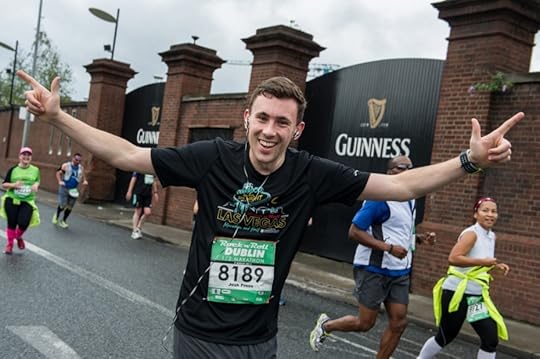
Credit: Ryan Bethke
View Larger Image
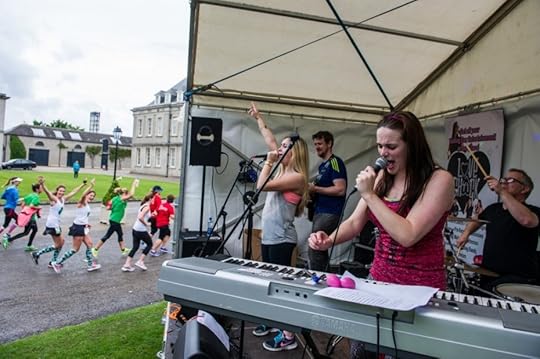
Credit: Ryan Bethke
View Larger Image
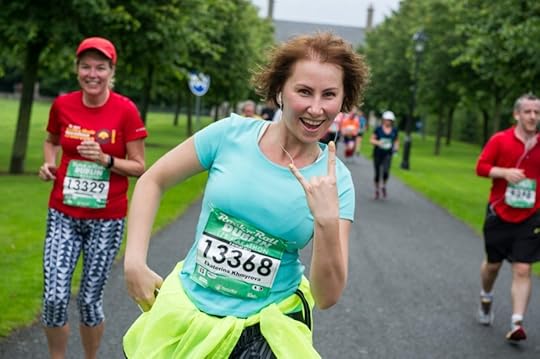
Credit: Ryan Bethke
View Larger Image

Credit: Ryan Bethke
View Larger Image
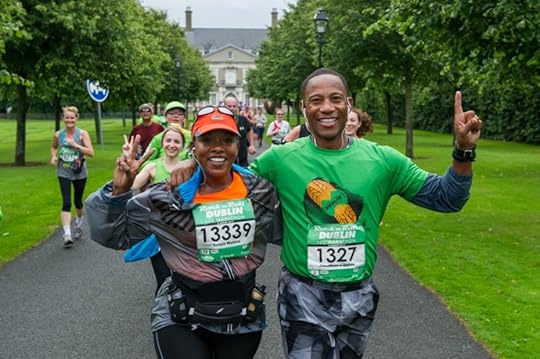
Credit: Ryan Bethke
View Larger Image
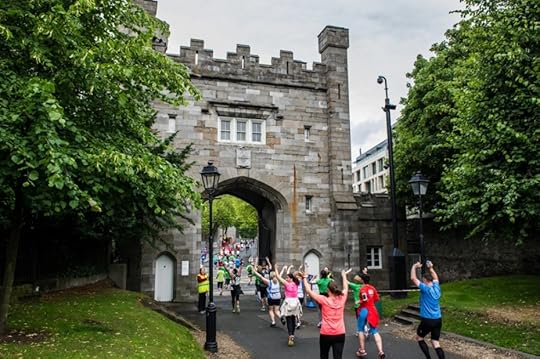
Credit: Ryan Bethke
View Larger Image
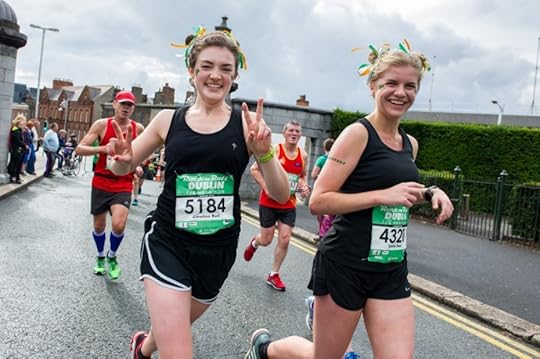
Credit: Ryan Bethke
View Larger Image
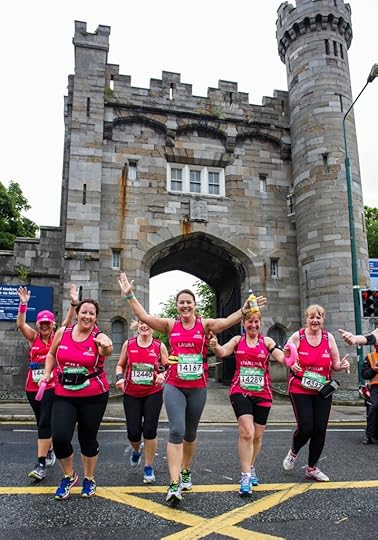
Credit: Ryan Bethke
View Larger Image
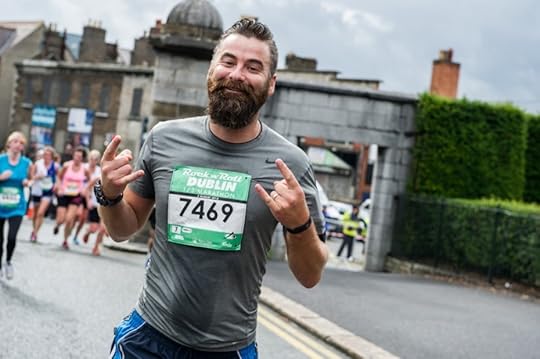
Credit: Ryan Bethke
View Larger Image
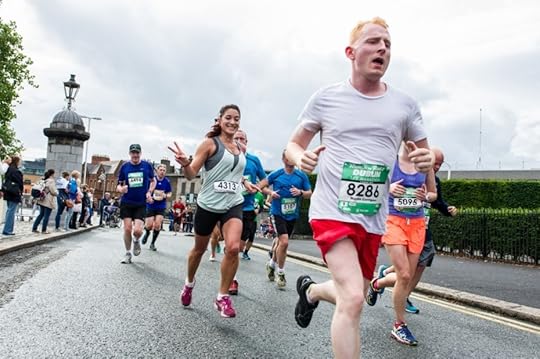
Credit: Ryan Bethke
View Larger Image
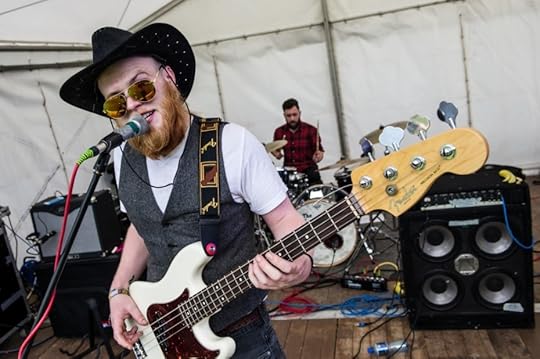
Credit: Ryan Bethke
View Larger Image
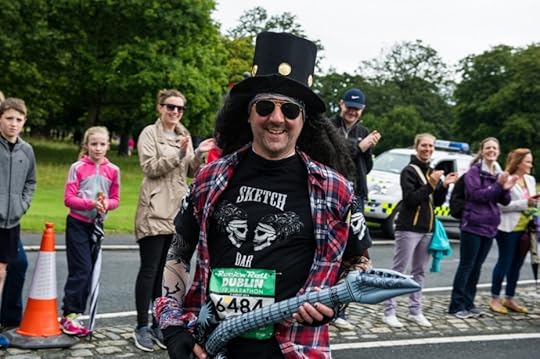
Credit: Ryan Bethke
View Larger Image
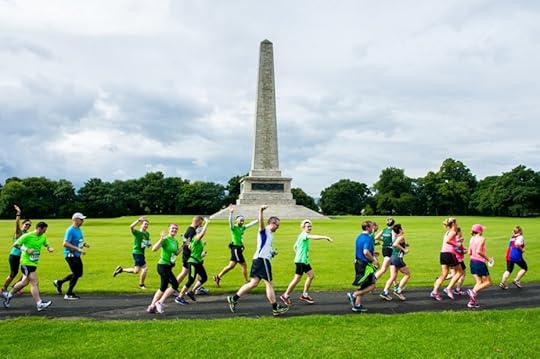
Credit: Ryan Bethke
View Larger Image
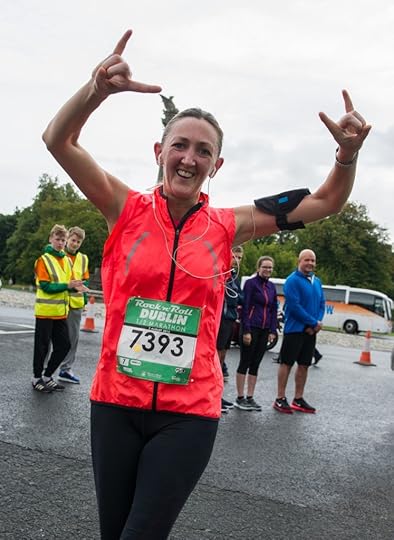
Credit: Ryan Bethke
View Larger Image
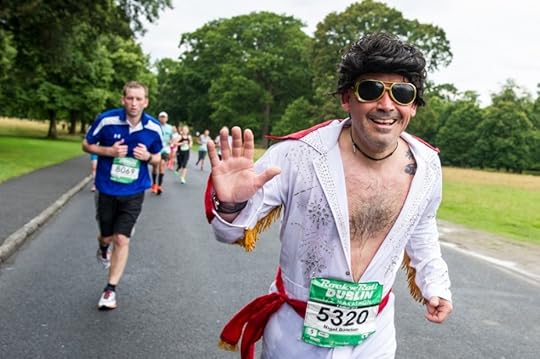
Credit: Ryan Bethke
View Larger Image
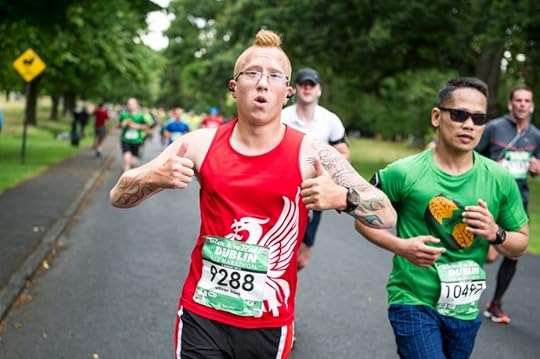
Credit: Ryan Bethke
View Larger Image
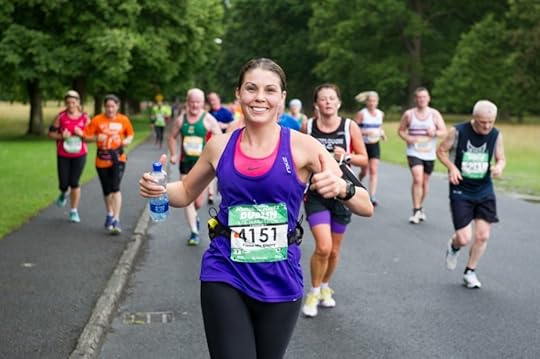
Credit: Ryan Bethke
View Larger Image
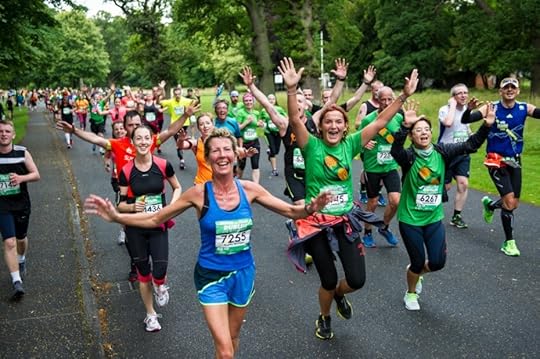
Credit: Ryan Bethke
View Larger Image
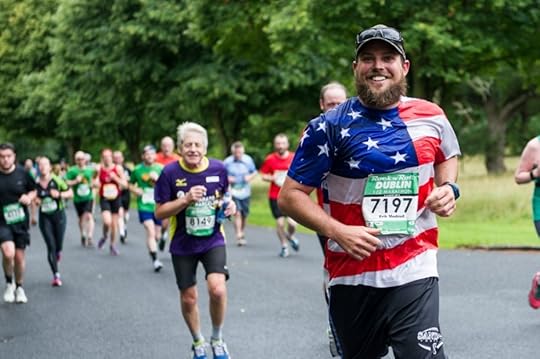
Credit: Ryan Bethke
View Larger Image
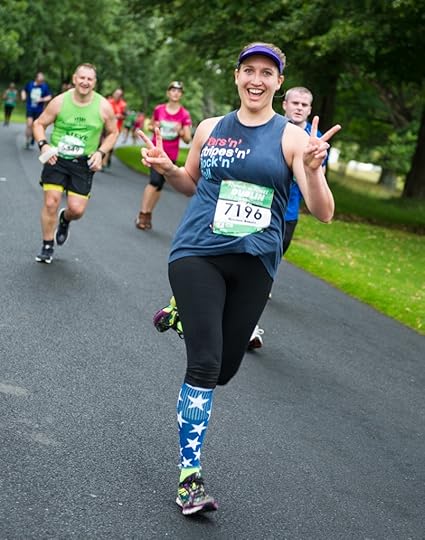
Credit: Ryan Bethke
View Larger Image
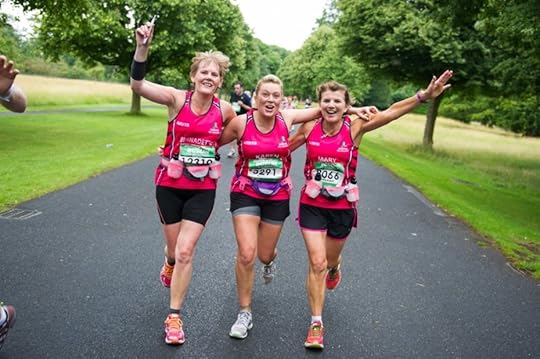
Credit: Ryan Bethke
View Larger Image

Credit: Ryan Bethke
View Larger Image
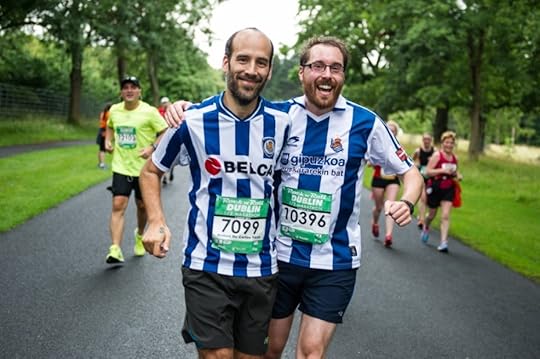
Credit: Ryan Bethke
View Larger Image
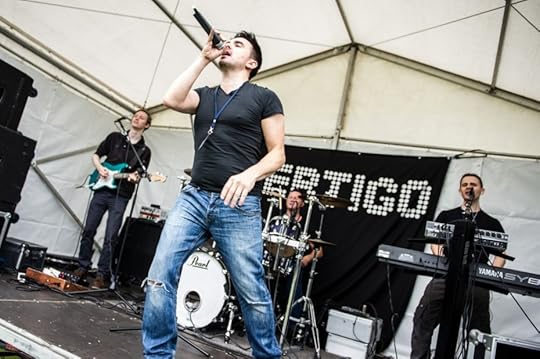
Credit: Ryan Bethke
View Larger Image
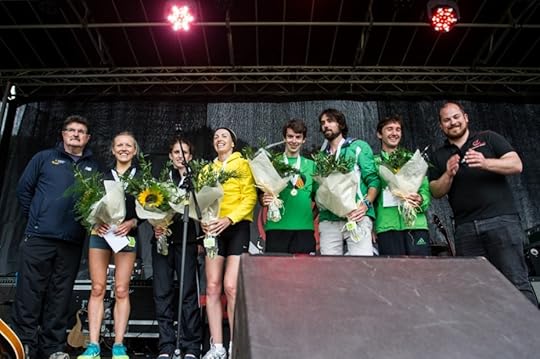
Credit: Ryan Bethke
View Larger Image

Credit: Ryan Bethke
View Larger Image

Credit: Ryan Bethke
View Larger Image

Credit: Ryan Bethke
View Larger Image

Credit: Ryan Bethke
View Larger Image

Credit: Ryan Bethke
View Larger Image
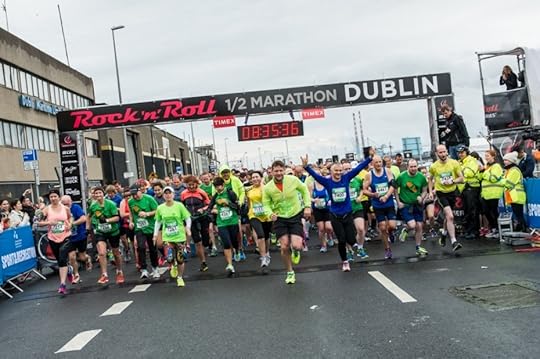
Credit: Ryan Bethke
View Larger Image
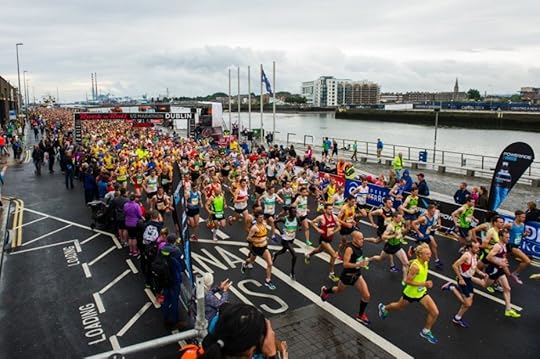
Credit: Ryan Bethke
View Larger Image
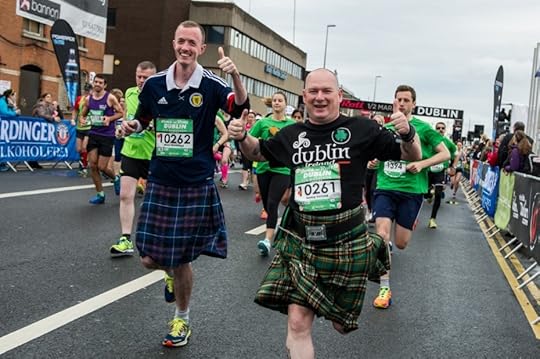
Credit: Ryan Bethke
View Larger Image

Credit: Ryan Bethke
View Larger Image
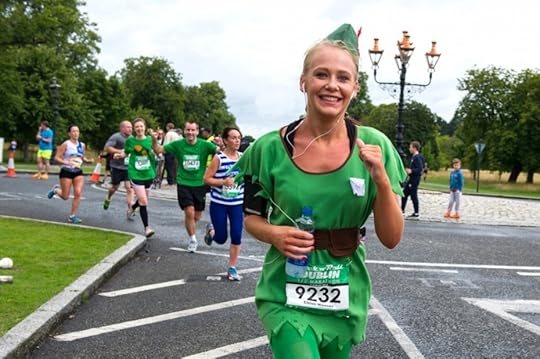
Credit: Ryan Bethke
View Larger Image
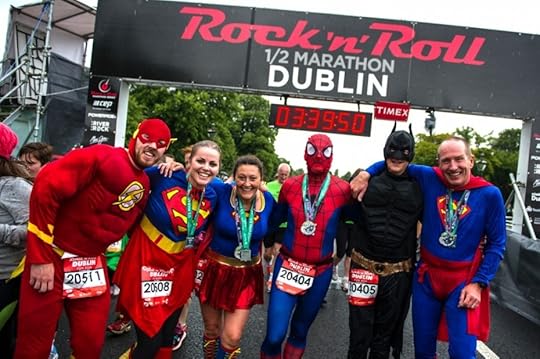
Credit: Ryan Bethke
Related Galleries

Participants hit the Pavement at Rock ‘n’ Roll Seattle Marathon & 1/2 Marathon
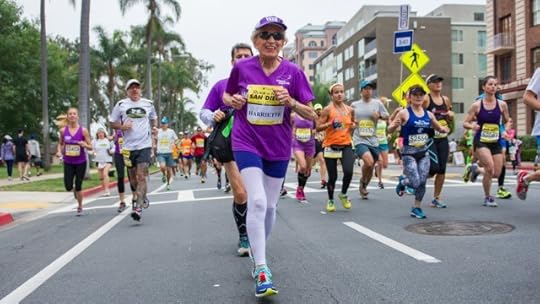
Masters Shine in the Suja Rock ‘n’ Roll San Diego Marathon
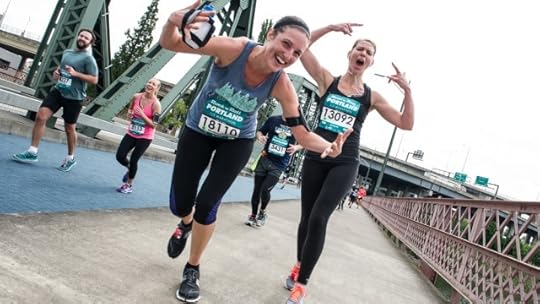
Runners Rock the City of Roses
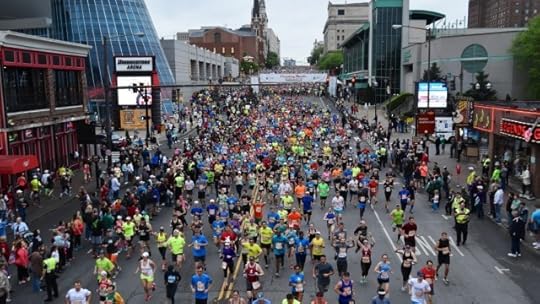
Runners Take Over the Streets of Nashville for the St. Jude Country Music Marathon

More Galleries
Thousands of runners took part in the 3rd annual Rock ‘n’ Roll Dublin Half Marathon on Sunday. The race started at 8:30 a.m. Sunday morning with participants running from the Docklands to Phoenix Park. Paul Pollock (1:05:09) and Lizzie Lee (1:13:27) won the men’s and women’s races respectively, which doubled as the Irish Half Marathon National Championships. Participants enjoyed live local bands entertaining them along the route and a celebratory finish line festival and headliner concert performance by The Hot Sprockets.
The post Photos: Thousands Take Part in Rock ‘n’ Roll Dublin Half Marathon appeared first on Competitor.com.
August 1, 2015
The Dangers of Overstriding—and How to Stop It
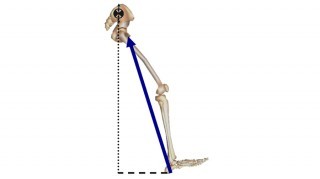
Overstriding occurs when the dashed line above is too long. Image: courtesy of Dr. Bryan Heiderscheit.
Want to run healthy forever? Start here.
It is well-known that 65-75 percent of runners experience an injury every year (1). This makes running a highly injurious sport, causing researchers to look into what factors lead runners to injury.
The list of risk factors is extensive but near the top is overstriding. Running stride is the distance from where your foot hits the ground back to an invisible line down from your center of mass (anatomically, this is the fifth segment of the lumbar spine).
Once this line passes a certain length, we consider it overstriding. Overstriding has been shown to increase stress on the body. Some people have enough strength to absorb the increased stress but many do not. Even with enough strength, it is not efficient to run accepting more mechanical load (stress) than is necessary to produce forward momentum.
But wait—it gets worse. The longer the stride, the greater amount of vertical displacement. This means the further out you stride, the higher you jump in the air and, therefore, the harder you land on the ground. Increased vertical displacement is another top risk factor in running injuries.
Further, overstriding leads to a straighter knee and a more aggressive heel strike which significantly reduces the knee muscles’ ability to absorb shock. The shock is then transferred to the knee menisci, knee joint and on to the hip and back joints.
The most definitive way to know if you are overstriding is to undergo a running analysis. Find a clinician that is well-trained in running biomechanics and, under high-speed video, have them assess your stride length relative to your leg length and speed.
2 Ways to Stop Overstriding
Here are two ways to reduce over striding on your own:
1. Increase your cadence by 5 percent of what it is currently. In the 2011 paper “Effects of step rate manipulation on joint mechanics during running”, researchers from the University of Wisconsin investigated whether they could reduce impact forces in runners by increasing their stride rate. By monitoring load changes following small modifications to stride rate, they concluded that “subtle increases in step rate can substantially reduce the loading to the hip and knee joints during running and may prove beneficial in the prevention and treatment of common running-related injuries.” (2)
To learn your cadence, count your right foot strikes in 30 seconds and multiply by 4. The number should be between 145-190. An ideal range is between 170-190.
2. Gradually begin to reduce the amount of heel cushion in your shoe. This is called “drop” or “heel-toe offset” in shoe terms. If you’re in 12mm drop shoes now, consider buying your next pair with an 8mm drop. We recommend running in 6mm or less. A less cushioned heel discourages a huge overstriding heel-strike pattern of landing. As a bonus, you will find the lower drop shoe generally has less structure and stiffness, which means your foot gets to work as nature intended. Despite what you’ve been told, your foot wants to do its job and doesn’t want a shoe to inhibit its natural movement.
RELATED: Footstrike 101: How Should Your Foot Hit The Ground?
Addressing your overstriding habit is a great place to start but is in no way entirely comprehensive for adequate running health. There are many aspects of running that we may need to address to make sure we stay healthy. But, if you’ve never taken a good look at how you run, start with finding out if you’re overstriding and you’re likely to see a profound effect on your running health and performance.
* * *
About the Author: Dr. Eric Schweitzer has been a Doctor of Physical Therapy for 14 years and is board certified in orthopaedic physical therapy. He is one of the few clinicians in the country that specializes specifically in running medicine including running injury prevention, running injury rehabilitation & running performance. Eric is certified as a Pose Running form coach as well as a certified manual therapist. Eric owns Premier Physical Therapy & Yoga in Clearwater. This is the only yoga studio in Tampa Bay where the yoga is guided by a Doctor of Physical Therapy. His other clinic, Premier Run & Fit, is a running specific physical therapy clinic inside a retail running store, The St. Pete Running Company. Find more about Dr. Schweitzer at www.PremierRunFit.com, Twitter: @RunTampaBay
* * *
Sources:
Injuries in runners. Lysholm J, Wiklander J. Am J Sports Med. 1987 Mar-Apr;15(2):168-71.
Reduced Eccentric Loading of the Knee with the Pose Running Method. Arendse R, Noakes TD, Azevedo LB, Romanov N, Schwellnus, Martin P, Fletcher, G. Medicine & Science in Sports & Exercise: Volume 36(2) February 2004 pp 272-277
Effects of step rate manipulation on joint mechanics during running. Heiderscheit BC, Chumanov ES, Michalski MP, Wille CM, Ryan MB. Med Sci Sports Exerc. 2011 Feb;43(2):296-302.
The post The Dangers of Overstriding—and How to Stop It appeared first on Competitor.com.
July 31, 2015
Don’t Fly Without Compression
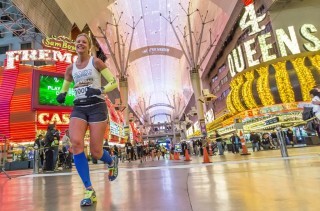
Stay fresh while traveling to a race by wearing lower body compression.
Stiff legs, a creaky back, and a generally grumpy attitude often accompany a long trip on an airplane. Yes, the drudgery of hauling a suitcase through an airport and standing in a security line may have an effect, and there is a real physical impact from a long flight that can hamper you ability to run at your best following a big trip. A group of super-fit soccer players were measured for their mood and 30-second sprint ability after a long flight. This may not come as a surprise to any veteran traveler, but their mood and sprint power both dropped for two days following the flight. For any runner traveling to a race or simply looking to have a great workout during a business trip, this drop in performance and attitude makes a big difference.
Compression apparel can play a role in preventing serious medical issues that may occur when sitting for a long time, such as during a flight. In addition to promoting recovery, compressive lower body clothing also helps improve blood circulation during a long stay in a cozy coach-class seat. A group of scientists reviewed nine different studies to determine if compression socks reduced the chance of blood clotting—deep vein thrombosis—during air travel. Their findings were clear—wearing compression socks improved the chances of avoiding a clot. Cardiologist and triathlete, Dr. Alice Perlowski, agrees that the effects of compression can benefit a runner while traveling. “Blood is pooling because you’re not walking around on the plane,” she told Competitor’s sister publication, Women’s Running. The right set of medical-grade compression apparel can help reduce pooling.
Another study helps to explain the effect compression socks have on a frequent flyer. This 2011 study from the peer-reviewed scientific journal Advances in Therapy found that graduated compression socks “enhance venous blood flow” in the lower body when sitting for a long time, such as while traveling to a race. Wearing compression helped cycle blood through the body and reduced ankle and foot swelling.
Before going to the airport, make sure to slip on a pair of graduated compression socks. Your legs with thank you.
Find your Recovery + Pro Compression at CEPcompression.com.
The post Don’t Fly Without Compression appeared first on Competitor.com.
Americans Going for Bragging Rights at Beach to Beacon 10K
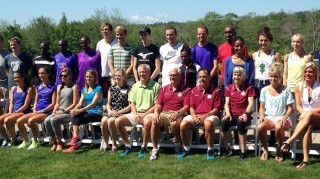
The top runners pose for a group photo before Saturday's Beach to Beacon 10K. Photo: Chris Lotsbom
(c) 2015 Race Results Weekly, all rights reserved. Used with permission.
CAPE ELIZABETH, Maine — Here at the 18th annual TD Beach To Beacon 10K press conference, there was a metaphorical divide between the elite athletes. Roughly 25 of the nation and world’s best sat in white chairs behind race founder and 1984 Olympic Marathon gold medalist Joan Samuelson, race director Dave McGillivray, and other event dignitaries. Standing towards the front was Larry Barthlow, the elite athlete coordinator, who spoke of America experiencing a resurgence and new golden age of distance running.
He called it a re-birth, a new generation, an “explosion of distance running” talent from sea to shining sea, with some of America’s top talents gathered here in the quaint town along the Atlantic coastline. Name-dropping the likes of Bill Rodgers and Samuelson, he looked at the bunched group with great hopes and expectations.
Seated, the American runners were separated by a small, three foot aisle, a break in the rows of chairs for easy access in and out. Yet in a way that little green gap could represent the current and future generations, the latter towards the left of the grassy passage and the former to the right. All will battle for a $23,000 USA-only prize purse presented by Dunkin Donuts, to be awarded in addition to open prize money, on Saturday.
In the back row, American Aaron Braun smiled, flanked by Christo Landry and Chris Solinsky. The trio—all under 30-years-old—were part of the “veterans” group.
“It’s great to see kind of a mix of generations. The old guys sitting next to each other, me, Abdi [Abdirahman, a four-time Olympian], Christo, Chris Solinsky, and then the young guys that are just graduating, getting to taste—I think—their first road race and see what the professional roads scene is like,” said Braun, 28.
The young guns Braun spoke of include Will Geoghegan, 23, who recently graduated from the University of Oregon and now represents Nike. A native of Brunswick, Maine, Geoghegan is competing in his seventh consecutive TD Beach to Beacon 10K, though his first as a professional.
RELATED: 10 Must-Do 10Ks in the United States
Geoghegan’s fellow millennials—Eric Jenkins, Riley Masters, and Maksim Korolev—also are racing, all within their first or second year as professionals.
Depending on the age, each athlete is approaching tomorrow’s race here differently. For Braun and Abdirahman, it is a fun test of fitness, a mid-summer contest before they each buckle down and begin marathon training in anticipation of the 2016 U.S. Olympic Marathon Trials in Los Angeles on February 13.
Others, like Geoghegan, Jenkins, and Masters, are coming off long track seasons that saw them compete all through Europe in the last month. Native New Englanders, it’s a chance to cap off this stage of the summer stretch of racing with a competitive race on the roads against both domestic and international competition.
Braun speaks passionately about the race, telling Race Results Weekly the event has always been on his bucket list. It presents an exciting chance for the father of one to race against the up and coming generation, athletes who could be his main competition in the years to come.
“I know for me my first professional road races made me absolutely fall in love [with the roads] and drew me more and more away from the track. I think there’s a good combination of marathoners here that can see how they compare to the pure speed of the younger guys,” he said.
Even better, a large pay day awaits the top athletes from the red, white, and blue when they reach the finish in Fort Williams. The top American will take home $5,000; no American man or woman has won this event since its inception in 1998.
“This is like a U.S. Championships-quality field, even before Ben [True, last year’s third place finisher] pulled out. With him in there, there were two sub-13:10 guys [and] Abdi and Christo, and so many amazing times and yet this isn’t a U.S. Championships,” said Braun. “Hopefully this shows other races around the country that if you bring a little American money you’ll get some great American runners. It’s a great thing for the sport.”
As for the young guns, their eagerness to compete is trumped by their relaxed mentalities.
“I’ve been happy with how things have been going. I’m not going to put any pressure on myself, and go out there and expect a good hard race,” said Jenkins, fresh off a 13:07.33 5000m personal best. “It’s going to be good. These guys are all really good at racing, especially road racing, so I’m going to have my hands full. I’m just really expecting to hang as long as I can and be competitive throughout.”
He continued: “I’ve never really ran a hard 10,000m yet in my career so this will be a good chance to test myself and see how I stack up.”
Geoghegan will have experience on this hilly course, giving him a bit of a leg up on the other racers.
“I’m really excited. This is my seventh or eighth Beach to Beacon in a row, it’s a race I’ve always done for fun and now I’m able to do it as my job. That’s really exciting for me,” he said, quick to acknowledge his older and even more experienced competition. “There’s a lot of people who can mix it up with the international guys up front.”
The American women are led by USA National Cross Country champion Laura Thweatt, B.A.A. High Performance teammates Sarah Pagano and Katie Matthews, and New Balance’s Liz Costello. Their top international competition is Great Britain’s Gemma Steel, the reigning champion.
Six miles from the start is an entrance to the finishing straight in Fort Williams, a grassy stretch that leads to Casco Bay and the majestic Portland Head Lighthouse. The 200-meter homestretch is the same lush green color as that path that divided young from “older” at today’s press conference. It could be where the American race is decided on Saturday.
A total of $23,000 for American citizens, made possible by local owners of Dunkin’ Donuts franchises in Maine, will be paid five-deep: $5000-3000-2000-1000-500. These amounts are in addition to the overall, 10-deep purse for all-comers which begins at $10,000. The total prize money purse is now over $90,000.
The post Americans Going for Bragging Rights at Beach to Beacon 10K appeared first on Competitor.com.
Sarah Bowen Shea: Being a Good Patient Pays Off
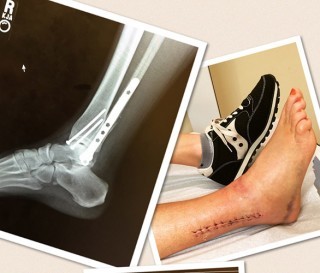
Starting at the age of two, I had to wear glasses to correct a cross-eye or, as most folks say more gently now, a “lazy” eye. An ophthalmologist I’d end up seeing a great deal over the coming years, Dr. Ostriker, prescribed glasses as well as a regimen of eye drops, patches, and exercises to strengthen my weak right eye. Some of my earliest childhood memories are of doing sewing cards while wearing a flesh-colored adhesive patch over my good eye, and playing pirate on the days my mom would let me wear a black, fabric-and-elastic eye patch instead.
While the patches and drops were only temporary measures, eyeglasses were my constant companion from before I even started preschool. I didn’t question wearing them, despite being able to see perfectly well. I’d say I wore them as surely as I brushed my hair and teeth, but I was more diligent about wearing my glasses than using a comb or a toothbrush.
Then, on a sunny June day after sixth grade, I went in for yet-another exam with Dr. Ostriker. She delivered news I hadn’t seen coming: I didn’t have to wear glasses anymore. My eyes were cured, she said, because of my dedication to donning my glasses. It wasn’t until she said, “If you hadn’t worn your glasses so faithfully, this day would have never come,” did it dawn on me I could have opted to not wear them.
Being a diligent, rule-following patient works equally well with running injuries as eye problems. In my Another Mother Runner duties, I often meet women who tell me they’ve been suffering from plantar fasciitis for years, yet they are running a half-marathon the following day. Or they have terrific IT pain during every run, yet they just ran their 10th 10K of the year.
It’s no fun to foam roll, walk in a swimming pool instead of run, do acupuncture, or even be inactive for weeks on end, but sometimes that’s what the doctor orders to recover from an injury. I know: I’m coming off two months of no exercise because of multiple fractures in my ankle. I’m currently swimming, riding a stationary bike, and taking a barre-style class. All approved by my orthopedic surgeon.
I’m also seeing a physical therapist twice a week—and religiously doing the exercises and stretches she prescribed for me. It means I set my alarm 20 minutes earlier than I’d like, but the results are paying off: I’m gaining more flexibility and stability in my ankle than any of my health professionals expected to see less than three months after major ankle surgery.
Bottom line: Listen to your body—then listen to your healthcare provider. The better you are at following the steps they prescribe, the sooner you’ll return to taking running steps.
The post Sarah Bowen Shea: Being a Good Patient Pays Off appeared first on Competitor.com.
Ryan Hall's Blog
- Ryan Hall's profile
- 21 followers



